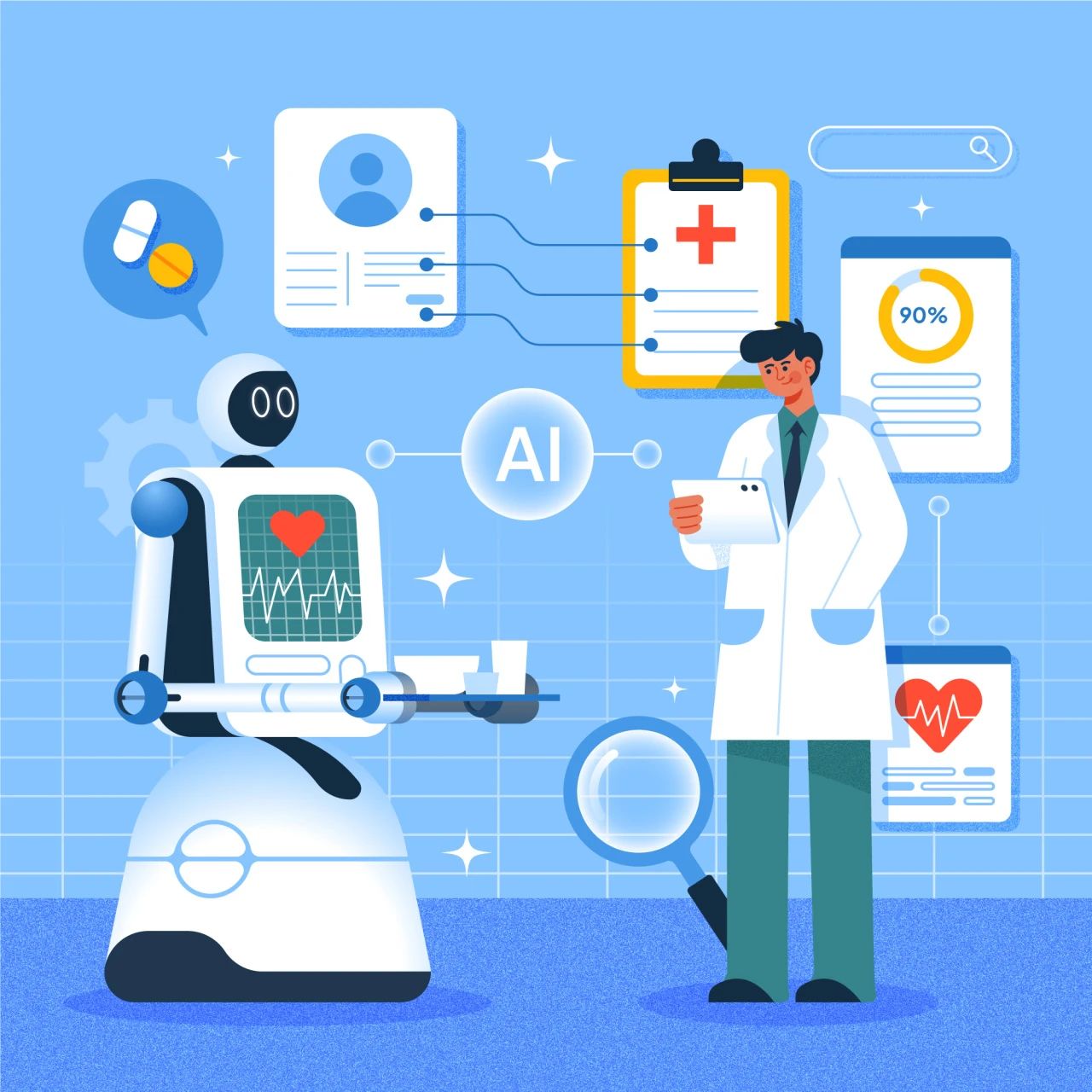
Introduction: The Next Leap in Medical AI
Multimodal artificial intelligence (AI) is redefining the future of digital medicine by integrating diverse data types—medical imaging, electronic health records (EHR), genomics, sensor data, and clinical narratives—into unified analytical models. Unlike single-modality systems that focus on a single data source, multimodal AI reflects the complexity of clinical decision-making by synthesizing heterogeneous inputs to improve diagnostic precision, prognostic accuracy, and treatment personalization.1
Recent frameworks, such as Holistic AI in Medicine (HAIM), have demonstrated superior performance across various clinical tasks, including pathology detection and outcome prediction, outperforming single-source models by margins of 6–33%.2 Despite these advances, challenges persist in data standardization, integration, and bias mitigation. However, transformer-based models like Med-PaLM M are advancing the field, offering scalable, unified processing of multimodal data. As this technology matures, it promises to support a more contextualized, efficient, and personalized healthcare ecosystem.3,4
What Is Multimodal AI? A Primer for Clinicians
Multimodal AI refers to systems that integrate and analyze multiple types of data—such as imaging (e.g., X-rays, MRI), clinical notes, biosignals (e.g., ECG, EEG), genomic profiles, wearable sensor data, and even speech or video—to provide richer, more accurate clinical insights. These systems leverage advanced fusion architectures, including attention mechanisms and transformers, to effectively combine complementary information.5
For instance, models like Med-PaLM M can handle both image and text inputs within a single framework, enabling comprehensive clinical assessments. Outside medicine, foundational models like GPT-4 and CLIP have inspired similar innovations in healthcare, demonstrating the feasibility of joint modeling across data types. By harnessing these capabilities, multimodal AI is poised to support real-time, holistic decision-making that mirrors the way physicians synthesize diverse clinical inputs.6,7,8
Real-World Applications in Digital Medicine
Multimodal AI is already making tangible impacts across a range of clinical domains. In diagnostics, it enhances disease detection by combining imaging with EHR notes and lab values, often surpassing unimodal approaches in identifying cancers, cardiovascular conditions, and metabolic disorders. In intensive care, these systems integrate waveform data, labs, and progress notes to predict deterioration and optimize interventions.9,10
In neurology and mental health, AI models analyze facial expressions, speech patterns, and sensor data to identify early signs of cognitive decline or psychiatric disorders. Wearables and remote monitoring tools, when combined with imaging and genetic data, enable timely predictions of stroke or cardiac events.11
Perhaps most notably, multimodal AI enables the development of digital twins—personalized virtual models that simulate disease progression and treatment outcomes. In oncology, these models integrate tumor genomics, histopathology, and therapy history to guide tailored treatment planning. These tools not only improve patient care but also help clinicians anticipate complications and adjust therapies accordingly.12
Frontier Innovations and Research Directions
Emerging research in multimodal AI is expanding both the depth and breadth of its clinical utility. Foundation models like GatorTron, BioGPT, and Med-PaLM are being adapted for specialized fields such as cardiology and oncology, enabling more nuanced decision support. Vision-language models like LLaVA can process and relate image and text data simultaneously, supporting automated report generation and clinical reasoning.13
Agent-based systems like AutoGPT demonstrate the potential for real-time, dynamic decision-making by autonomously navigating multimodal inputs. Simultaneously, the rise of multimodal digital biomarkers—such as those combining voice, facial cues, and clinical data—is opening new avenues for early detection of complex disorders, including Parkinson’s disease, schizophrenia, and long COVID.14
Importantly, multimodal AI is also enhancing care in resource-limited settings. Smartphone-based diagnostic tools that combine image analysis with patient-reported symptoms are expanding access to quality care in underserved populations. While ethical considerations, data diversity, and interpretability remain challenges, ongoing research and technological refinement are steadily advancing toward equitable and explainable AI applications in global healthcare.15,16
Reference:
Li Y, et al. Multimodal artificial intelligence in medicine: advances and challenges. NPJ Digit Med. 2023;6(1):45.
Shickel B, et al. Integrated multimodal artificial intelligence framework for healthcare machine learning systems. NPJ Digit Med. 2022 Sep 20;5(1):147.
Dir Journal. The future of multimodal artificial intelligence models for integrating imaging and clinical metadata: a narrative review. 2024 Oct 2.
Wang F, et al. Review of multimodal machine learning approaches in healthcare. Comput Biol Med. 2024;156:106888.
Lee J, et al. As artificial intelligence goes multimodal, medical applications multiply. Science.2024; [DOI:10.1126/science.adk6139].
Radford A, et al. Learning Transferable Visual Models From Natural Language Supervision. ICML Proceedings. 2021.
Acosta JN, et al. Navigating the landscape of multimodal AI in medicine: challenges and clinical translation. Patterns (N Y). 2024; [PMCID: PMC12025054].
Johnson AEW, et al. Integrated multimodal artificial intelligence framework for healthcare applications. NPJ Digit Med. 2022;5(1):150.
Maierhofer A, et al. Holistic AI in Medicine (HAIM) framework to facilitate the generation and testing of AI systems that leverage multimodal inputs. Nature. 2022; [PMCID: PMC9488333].
Schouten D, et al. Navigating the landscape of multimodal AI in medicine: a scoping review on technical challenges and clinical applications. ArXiv. 2024; [PMCID: Not available].
Chen et al. Multimodal medical AI. Google AI Blog. 2024; [PMCID: Not available].
Cheerla and Gevaert Multimodal deep learning model to jointly examine pathology whole-slide images and molecular profile data from 14 cancer types to predict outcomes and discover prognostic features correlating with poor and favorable outcomes bioRxiv 2019;[PMID: Not available]
Nature Digital Medicine. Multimodal generative AI for interpreting 3D medical images and videos. 2025 May 13.
The Innovation. Artificial intelligence for medicine 2025: Navigating the endless frontier. 2025.
Lutz Finger. Multimodal AI In 2025: From Healthcare To eCommerce And Beyond. Forbes.2025 Jan 6.
The Innovation. AI forecasts forthcoming medical innovations including surgical robots and brain-computer interfaces. 2025.








Post comments